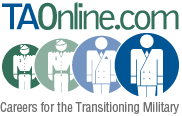Exporting Considerations
Preparing Products for Export
Selecting and preparing a product for export requires not only product knowledge but also knowledge of the unique characteristics of each market being targeted. The market research conducted and the contacts made with foreign representatives should give the U.S. company an idea of what products can be sold where. Before the sale can occur, however, the company may need to modify a particular product to satisfy buyer tastes or needs in foreign markets.
The extent to which the company will modify products sold in export markets is a key policy issue to be addressed by management. Some exporters believe the domestic product can be exported without significant changes. Others seek to consciously develop uniform products that are acceptable in all export markets.
If the company manufactures more than one product or offers many models of a single product, it should start with the one best suited to the targeted market. Ideally, the firm chooses one or two products that fit the market without major design or engineering modifications. Doing so is possible when the U.S. company:
- Deals with international customers with the same demographic characteristics or with the same specifications for manufactured goods,
- Supplies parts for U.S. goods that are exported to foreign countries without modifications,
- Produces a unique product that is sold on the basis of its status or foreign appeal, or
- Produces a product that has few or no distinguishing features and that is sold almost exclusively on a commodity or price basis.
Once the product or service has been identified the exporter should:
- Classify the product
- Define potential application for product
- Adapt product to new market
Classify Each Product & Service
In order to facilitate the data-gathering and analysis to be conducted in the subsequent activities, it is important to accurately classify the products/services being offered according to the relevant national and international classification standards. Customs services around the world have agreed on a hierarchical classification standard for products and services, known as the Harmonized System. Harmonized System, or HS, codes range from 2-10 digits in length, depending upon their specificity. The 2-digit HS codes describe very general product categories, such as foodstuffs, while the 4, 6, 8 and 10 digit codes describe increasingly narrow subsets of the 2-digit category, according to their specific composition, function and features. In the US, the Bureau of the Census maintains the US version of HS codes. This database has a simple keyword look-up facility to identify relevant HS codes.
SIC codes, which were first developed in the US, categorize different types of industrial or mercantile activity. SITC codes are an international version which are now mapped to HS codes. These can also be used in market research in order to facilitate the collection of consistent product market information from country to country. These standards were established some time ago and therefore do not address many modern products, such as specific computer peripherals.
Define Application(s) For Each Product and/or Service
The second task will be to define the potential application(s) of the products in foreign markets. For example, if a company is considering the export of a cleaning product, it will be necessary to determine whether the product will be used in a residential or an institutional environment, or both. Clarifying these assumptions up-front will make it easier to gather information on potential market capacity (e.g. number of households), as well as relevant distribution channels.
A company may find that building international recognition for a brand is expensive. Protection for brand names varies from one country to another, and in some developing countries, barriers to the use of foreign brands or trademarks may exist. In other countries, piracy of a company's brand names and counterfeiting of its products are widespread. To protect its products and brand names, a company must comply with local laws on patents, copyrights, and trademarks. A U.S. firm may find it useful to obtain the advice of local lawyers and consultants where appropriate.
Adaption of Products/Services to a New Market
To enter a foreign market successfully, a U.S. company may have to modify its product or service to conform to government regulations, geographic and climatic conditions, buyer preferences, or standard of living. The company may also need to modify its product/service to facilitate shipment or to compensate for possible differences in engineering or design standards.
Foreign government product regulations are common in international trade and are expected to expand in the future. These regulations can take the form of high tariffs or of nontariff barriers, such as regulations or product specifications.
Detailed information on regulations imposed by foreign countries is available from the country desk officers of the Department of Commerce's IEP unit. Where particularly onerous or, discriminatory barriers are imposed by a foreign government, a U.S. company may be able to get help from the U.S. government to press for their removal. The firm should contact a Department of Commerce district office or the Office of the U.S. Trade Representative in Washington, D.C. for further information.
It is often necessary for a company to adapt its product to account for geographic and climatic conditions as well as for availability of resources. Factors such as topography, humidity, and energy costs can affect the performance of a product or even define its use. The cost of petroleum products along with a country's infrastructure, for example, may indicate the demand for a company's energy-consuming products.
Buyer preferences in a foreign market may also lead a U.S. manufacturer to modify its product. Local customs, such as religion or the use of leisure time, often determine whether a product will sell. The sensory impact of a product, such as taste or visual impact, may also be a critical factor. The Japanese desire for beautiful packaging, for example, has led many U.S. companies to redesign cartons and packages specifically for this market.
A country's standard of living can also determine whether a company needs to modify a product. The level of income, the level of education, and the availability of energy are all factors that help predict the acceptance of a product in a foreign market. If a country's standard of living is lower than that of the United States, a manufacturer may find a market for less sophisticated product models that have become obsolete in the United States. Certain high-technology products are inappropriate in some countries not only because of their cost, but also because of their function. For example, a computerized industrial washing machine might replace workers in a country where employment is a high priority. In addition, these products may need a level of servicing that is unavailable in some countries.
Market potential must be large enough to justify the direct and indirect costs involved in product adaptation. The firm should assess the costs to be incurred and the increased revenues expected from adaptation (they may be difficult to determine). The decision to adapt a product is based in part on the degree of commitment to the specific foreign market; two firms, one with short-term goals and the other with long-term goals, may have different perspectives.
Engineering and Redesign:
In addition to adaptations related to cultural and consumer preference, the exporter should be aware that even fundamental aspects of its products may require changing. For example, electrical standards in many foreign countries differ from U.S. electrical standards. These electrical standards sometimes vary even in the same country. Knowing this requirement, the manufacturer can determine whether a special motor must be substituted or arrange for a different drive ratio to achieve the desired operating revolutions per minute.
Similarly, many kinds of equipment must be engineered in the metric system for integration with other pieces of equipment or for compliance with the standards of a given country. The United States is virtually alone in its adherence to a nonmetric system, and U.S. firms that compete successfully in the global market have found metric measurement to be an important detail in selling to overseas customers. Information on foreign standards and certification systems is available from the National Center for Standards and Certificates Information, National Institute for Standards and Technology, Administration Building, A629, Gaithersburg, MD 20899; telephone 301-975-4040.
Branding, Labeling, and Packaging:
Consumers are concerned with both the product itself and the product's supplementary features, such as packaging, warranties, and service. Branding and labeling of products in foreign markets raise new considerations for the U.S. company:
- Are international brand names important to promote and distinguish a product? Conversely, should local brands or private labels be employed to heighten local interest?
- Are the colors used on labels and packages offensive or attractive to the foreign buyer? In some countries, certain colors are associated with death, national flags, or other cultural factors.
- Can labels be produced in official or customary languages if required by law or practice?
- Does information on product content and country of origin have to be provided?
- Are weights and measures stated in the local unit?
- Must each item be labeled individually?
- Are local tastes and knowledge considered? A dry cereal box picturing a U.S. athlete may not be as attractive to overseas consumers as the picture of a local sports hero.
Installation:
Another element of product preparation that a company should consider is the ease of installing that product overseas. If technicians or engineers are needed overseas to assist in installation, the company should minimize their time in the field if possible. To do so, the company may wish to preassemble or pretest the product before shipping.
Disassembling the product for shipment and reassembling abroad may be considered by the company. This method can save the firm shipping costs, but it may add to delay in payment if the sale is contingent on an assembled product. Even if trained personnel do not have to be sent, the company should be careful to provide all product information, such as training manuals, installation instructions, and parts lists, in the local language.

